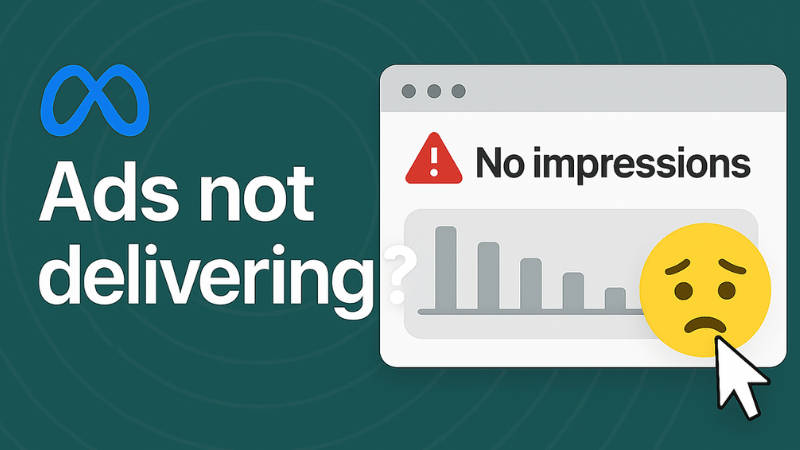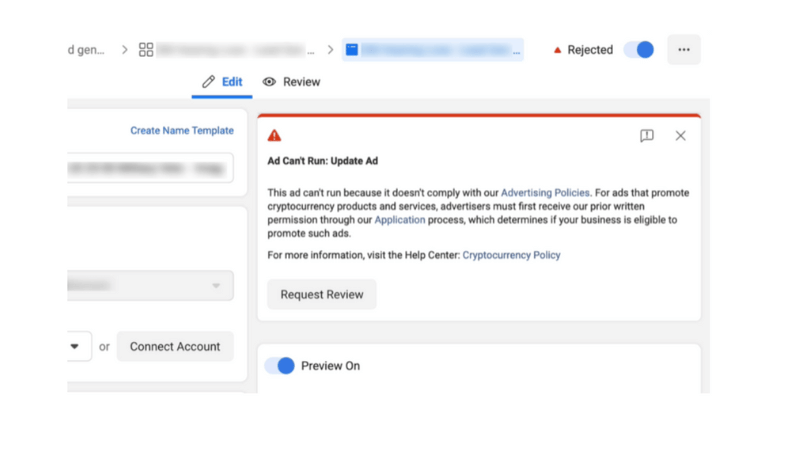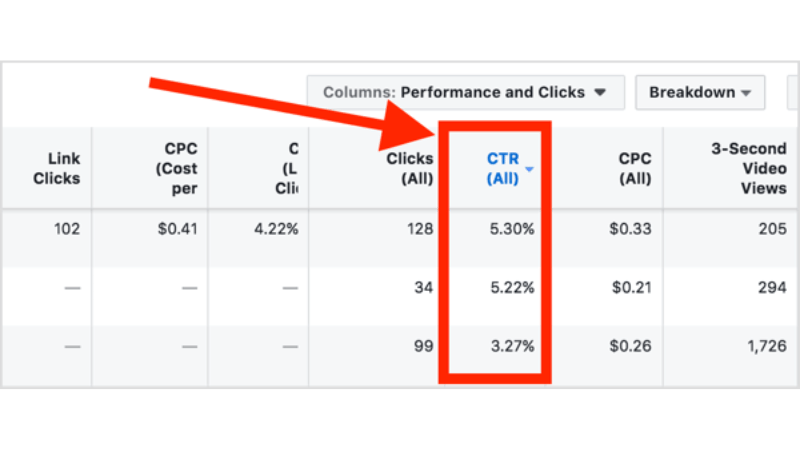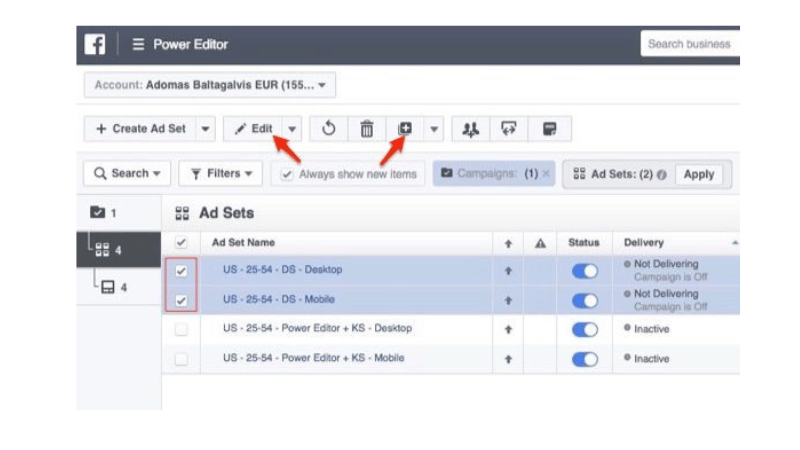Every advertiser experiences that moment of anxiety when their Facebook Ads campaign suddenly vanishes. You spent time and effort on setup, but the ad is not spending money, has no impressions, or worse, is completely invisible. The issue of a Facebook ad not delivering not only disrupts business plans but also causes you to waste resources and miss out on potential customers. The causes for this situation are diverse, ranging from small technical errors and flawed budget settings to more serious issues related to Meta’s policies. This article summarizes the 10 most common reasons why your Facebook ad not delivering. We also provide detailed and quick troubleshooting steps (updated for 2025), helping you bring your campaign back to efficient operation in an instant. Let’s dive in!
Facebook Ads suddenly “Invisible” – The hidden reasons
You spent time preparing a perfect ad campaign, but the ad isn’t showing? This is a common and often confusing situation that disrupts business plans and wastes resources. When your ad enters a state of not spending money, having no impressions, or suffering from intermittent delivery, it indicates invisible barriers are preventing the campaign from reaching customers. To find the solution to salvage your Ads, we must first precisely identify the hidden reasons behind the delivery problem. Below are the 10 most common causes for a Facebook ad not delivering on Meta’s advertising network.

The budget is too limited
One of the top reasons for a Facebook ad not delivering or running very slowly is that the budget you set is too low compared to the competition in the auction market. Facebook’s advertising system operates like a real-time auction. Every impression is a competition. If your daily or total campaign budget is not large enough, the system will struggle to bid high enough to win the display position. This is especially true in highly competitive niches or during peak hours. A limited budget can also prevent the campaign from completing the Learning Phase because it doesn’t collect the necessary data for the system to optimize, eventually stopping delivery entirely.
Incorrect audience targeting
Mistakenly defining your target audience is a silent error with a huge impact on delivery. When the targeted audience is too narrow (just a few thousand people) or limited by too many overlapping criteria, Facebook will have difficulty finding suitable people to show the ad to, resulting in the Facebook ad not delivering, quickly becoming saturated, and stopping the run. Conversely, if the audience is too broad and generic, the ad will be shown to people without a real need. This significantly reduces the Click-Through Rate (CTR) and the ad’s Quality Score, signaling to Facebook that the ad is irrelevant, thus the system will restrict delivery to protect user experience.
Blocked content
This cause is usually the most obvious: the ad is rejected by the review system for violating Meta’s strict Advertising Policies. Common violations include the use of sensational language, excessive claims, misleading statements about health or finances, or the use of sensitive and copyrighted images. When the content, images, or Landing Page are flagged for violations, the ad will never be allowed to be delivered. In some serious cases, your ad account even risks being disabled, causing all other campaigns to stop running as well.
Ad not yet approved
Every new or edited ad must go through Facebook’s automated and sometimes manual review process. Sometimes, due to the large volume of ads submitted, this process can be prolonged, or the ad can be “stuck” in a pending state. If the status in Ads Manager remains “In Review” for many hours or even a day, that explains why your ad cannot be displayed yet.
Pixel or tracking is not set up correctly
The Pixel is the tool that helps Facebook understand customer behavior on your website. If the Pixel is not installed correctly, or if it is faulty and not sending data back, Facebook will lack critical information to optimize ad delivery based on specific actions (like purchase, add to cart). Without data to learn from and optimize, the system cannot deliver the ad to those most likely to convert, reducing performance and causing Facebook to limit delivery.
Campaign setup errors

Mistakes during the initial setup can unintentionally cause the Ads to stop delivering. For example, if you set the wrong campaign objective (choosing “Engagement” when you want “Conversion”), the algorithm will deliver the ad for the wrong purpose, leading to the campaign not running effectively. Other errors can include selecting the wrong bidding type (too low or unsuitable), scheduling the ad run for incorrect hours, or forgetting to turn on the switch for the ad set or campaign.
Conflict with other ads
This phenomenon occurs when you have multiple ad sets or campaigns targeting the same narrow audience. These ads will automatically compete with each other in an internal auction. The system will select the strongest ad or the one with the highest potential to benefit Facebook for display. As a result, weaker ads will have limited delivery, have their budget cut, and gradually become invisible even though they haven’t violated any policies.
Low CTR

Click-through rate (CTR) is a critical metric Facebook uses to evaluate the quality and relevance of an ad. If your ad has a very low CTR (meaning users see the ad but don’t click), Facebook will determine that the ad is not engaging or is irrelevant to the target audience. To maintain a good user experience, Facebook will de-prioritize delivery for low-CTR ads, leading to increased costs and a sharp drop in impressions.
Ad is too old
When an ad creative runs for too long without any changes, users in the target audience will gradually become familiar with it, even finding it boring. This phenomenon is called “Ad Fatigue.” When Ad Fatigue occurs, the frequency of impressions will increase, CTR will drop, and the cost per result will rise. Noticing the decline in performance metrics, the Facebook algorithm will automatically reduce delivery priority to avoid content repetition and annoying users.
Geographically Restricted Targeting
If you set the geographical limit too small or exclude too many areas, the number of potential people the ad can reach will drop to a minimum. For example, targeting a service ad only to a small neighborhood in a large city may cause Facebook to fail to deliver effectively because the number of eligible people is too small. This limitation, combined with age or interest restrictions, makes the target audience too narrow, forcing the system to stop delivery.
Emergency Ad rescue: time-saving solutions
When an ad campaign stalls, finding a quick solution is the top priority to minimize revenue loss and seize market opportunities in time. Below are the immediate actions and necessary strategies, developed based on the 10 common causes for a Facebook ad not delivering, to help you restore and optimize campaign performance instantly.

Increase the budget and adjust the bidding strategy
If the cause of the Facebook ad not delivering is a budget that is too limited compared to the competition, the immediate solution is to increase the daily or total budget to a reasonable minimum level. This ensures the ad has enough capacity to win auctions. More importantly, switch the bidding strategy if needed. If you are using a manual bid strategy with a price that is too low, try switching to an automated bidding strategy so the Facebook system can self-optimize and seek the lowest cost, ensuring the ad is delivered sufficiently to pass the Learning Phase.
Refine objectives and expand the audience segment
For the problem of incorrect targeting (too narrow or too broad), take immediate action by refining the ad set. If the audience is too narrow, expand the criteria slightly, such as increasing the age range, adding related but less competitive interests, or loosening geographical restrictions. If the audience is too broad, use the Exclusion feature to eliminate user groups unlikely to purchase. Simultaneously, use the Optimization for Ad Delivery feature for a Conversion action (e.g., Purchase) instead of just Engagement, so Facebook focuses on higher-quality users.
Fix violations and appeal content
When content is blocked due to policy violations, the immediate action is to review and modify the images, videos, and text. Remove language that is sensational, exaggerated, or that includes sensitive images. After modification, resubmit the ad for review. If you believe your ad does not violate the policy, submit an appeal request to the Facebook team, providing clear evidence of compliance. While waiting, you must immediately create a completely new, policy-compliant ad creative to ensure the campaign is not interrupted.
Check status and speed up the approval process
If the ad has not been approved, the fastest solution is to re-check the status in Ads Manager. If the status has been stuck for too long, sometimes making a small change (such as altering the end date or adding a period to the description) and saving it can re-trigger the automated review process. If the ad is rejected, review the specific rejection reason and modify it according to the guidelines instead of trying to rerun the old version.
Verify and reinstall the Pixel
When you suspect the error lies with the Pixel or tracking tool, go to Events Manager to check the Pixel’s operational status. If the Pixel displays red or yellow, you need to re-check if the code has been correctly embedded in the tag of the website. Immediately install the Facebook Pixel Helper Extension on the Chrome browser to check if events are being sent back accurately. If necessary, use the Conversion API (CAPI) as a backup solution to ensure stable and accurate tracking data is being sent.
Review campaign settings and schedule
For campaign setup errors, the necessary action is to check each level: Campaign, Ad Set, and Ad. Ensure the Campaign Objective is correctly selected (e.g., Conversion instead of Reach). Check the Ad Schedule to ensure the ad is running during the current timeframe. Especially, if a spending limit is being used, check if it has been reached early. Ensure the on/off switch at all three levels is set to On.
Split the audience and adjust the placement
To resolve the issue of conflicts between ads, you need to split the audience segment into smaller, non-overlapping groups. For example: one group targeted by Interests, one group targeted by Behaviors, and one group targeted by Custom Audiences. Simultaneously, review the Placements. If the ad is only running in one specific, overly saturated placement, expand to other placements like Instagram Feed, Stories, or Audience Network to seek less competitive auction space.
Improve CTR with new content
When the CTR is too low, the immediate solution is to improve the quality of the ad creative. Conduct A/B testing with new variations of the headline, image/video, and Call-to-Action (CTA). Use more engaging language, eye-catching visuals, and a clear value proposition. The goal is to increase the ad’s relevance to the target audience. A quick tip is to use Dynamic Creative to let Facebook automatically combine the best ad components.
Refresh content and create new Versions
If the ad has been running for too long and is experiencing “fatigue,” do not try to keep it. Duplicate the old ad set, maintain the targeting settings, but completely replace the ad creative with entirely new content (using a different angle, message, or format). This helps reduce Frequency on the old audience, refreshes the user experience, and re-triggers positive delivery from Facebook.
Expand geography and remove constraints
If the cause is overly narrow geographical targeting, the solution is to expand the target area to adjacent regions or the entire country, then use other detailed targeting elements (e.g., Behaviors) to ensure audience quality. In cases where too many exclusion layers are applied, remove one or two constraints to broaden the potential reach. Ensure your potential audience size is large enough, typically over 500,000 people, for the system to have room to optimize.
Frequently Asked Questions
Facebook does not disclose an absolute budget figure, but the minimum threshold is typically defined by 50 conversion events (e.g., purchase, registration) within 7 days for each Ad Set. The immediate consequence if the threshold is not met is that the Ad Set will be labeled “Learning Limited,” leading to unstable delivery, higher Cost Per Acquisition (CPA), and ultimately the Ads stopping delivery to prevent waste.
The core difference lies in Frequency. Ad Fatigue occurs when frequency is high (usually ≥3) and CTR decreases, showing that the audience has seen the ad multiple times and is starting to ignore it. Conversely, low CTR due to incorrect targeting often occurs even when frequency is still low, proving that the ad was irrelevant to the viewer from the start.